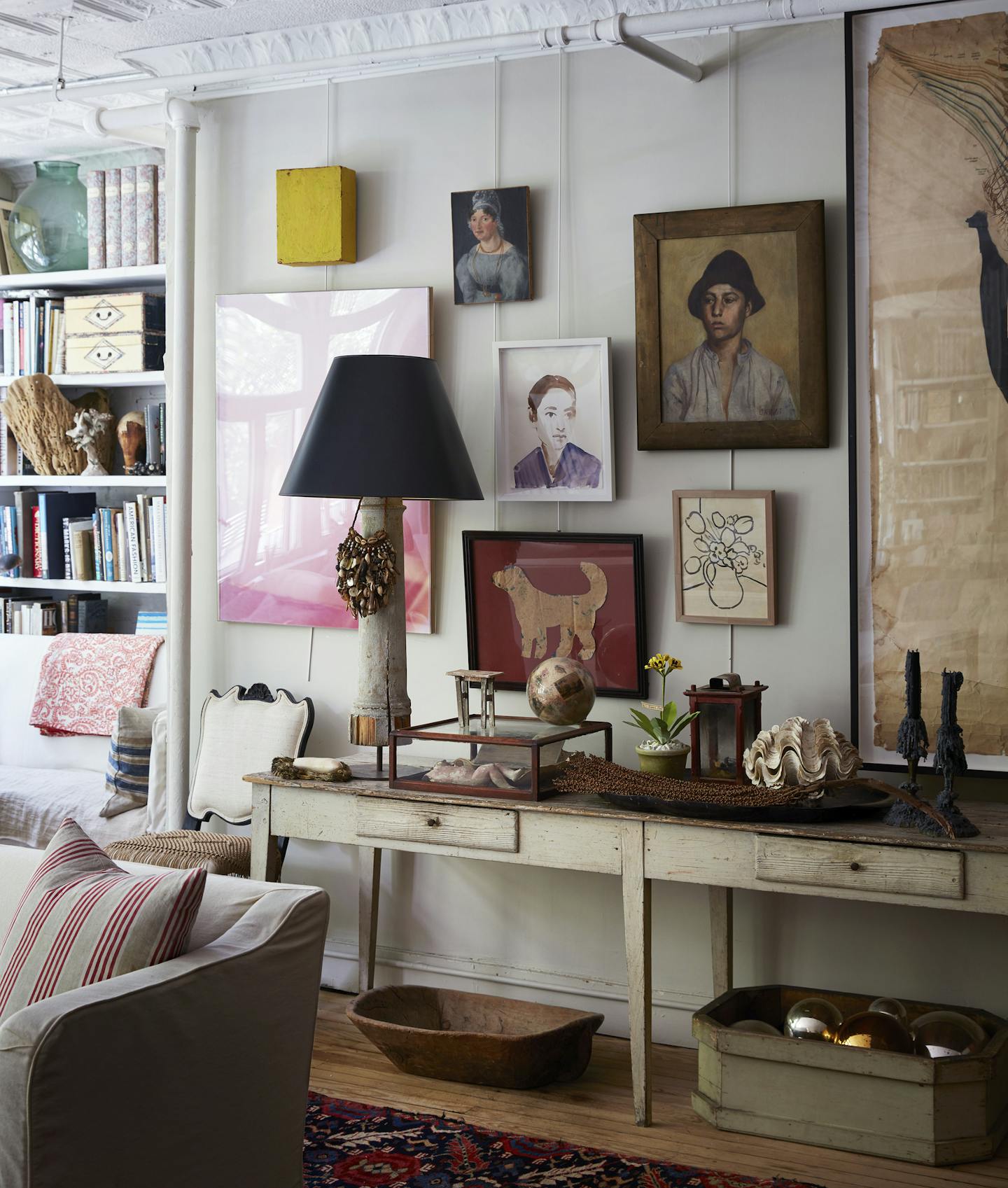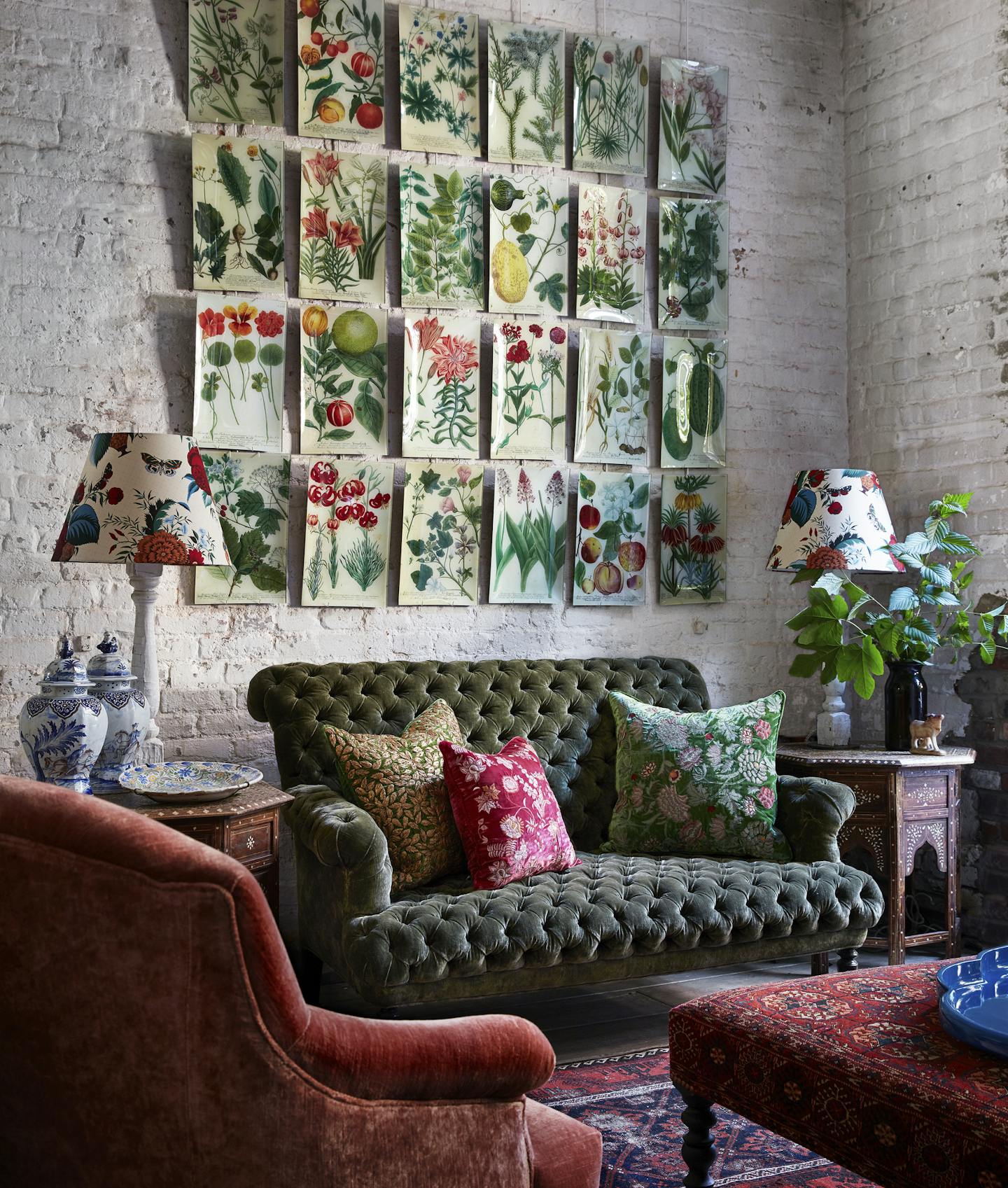New York City designer and shopkeeper John Derian is famous for combining antique furniture, vintage textiles, flea market finds and his signature decoupage pieces into vignettes that exude romance and character. Without a doubt, the man has an amazing way with walls.
"People are often intimidated about hanging artwork, especially if they think they don't have 'good' art," he says. "But it's an opportunity to display the things you love, however humble they may be." Here, Derian offers seven ideas from his own homes and stores for accenting any room with a fresh eye and spirited style.
1. Mix the unmatched
In his downtown Manhattan living room, Derian has combined works of disparate sizes, materials and subject matters into a relaxed, rhythmic whole. "A lot of people sketch salon-style arrangements on the computer, but I do it the old-fashioned way," he says, meaning he tries different setups on the floor until he reaches "a balance of color and form." He typically anchors the finely detailed pieces at eye level, and more graphic ones above or below. And instead of picture hooks installed with nails, he prefers vertical gallery rods, which have adjustable hooks and can be installed just under a molding: "They make it easy to move things around without making a hundred holes in the wall."
2. Celebrate the small
Placing a single miniature piece in a large space can have an outsize impact. In the living room of the house he and photographer Stephen Kent Johnson share in Provincetown, Mass., Derian hung one of his favorite pieces, a modestly sized 1930s still life by Cape Cod artist Evelin Bodfish Bourne, above one end of the sofa. "The diminutive scale and off-center positioning are sort of unexpected, so it attracts the eye," he says.
3. Take shape
Here's an arresting idea: Arrange a collection of decorative objects in a graphic formation. In his shop in New York City's West Village, Derian hung 19 ceramic plates by Astier de Villatte in a diamond (plate hangers make the job easy). "You could also try an oval, triangle or square," he suggests, and work with anything from baskets to mirrors. While the individual pieces don't all have to be the same size or color, he adds, they should be similar enough to create symmetry and read as cohesive.
4. Conjure a view
The reality of real estate is that we can't always have a window where we want one. But a well-placed find can turn a banal stretch of plaster into a captivating scene. This 19th-century nautical diorama above Derian's kitchen sink makes washing dishes less of a chore, says the designer, who spotted it in Antwerp, Belgium, and had it (you guessed it) shipped home. "It transports you."
5. Find perspective
And play with dimension. "Think about not only the room you're in, but what you see in the distance," says Derian. In his apartment, the back wall of his bedroom is visible through a doorway in the living room, so he hung a 20th-century paper collage above a bedside table to complement the paintings around the door frame. Also worth noting: The collage is bold and graphic, so it packs a punch from a distance. "It's a layering effect," he says.
6. Aim for surprise
Consider this cheeky switcheroo: Put a painting in a spot where you'd normally have a mirror. "This always gets a laugh," says Derian of the 19th-century portrait he hung over a bathroom sink in the Provincetown house. "Just when people are expecting to see their own reflection, they find themselves face-to-face with this guy."
7. Go for critical mass
A seriously stunning way to fill a big area is to hang multiples in a large grid. "The artwork doesn't have to be formal and framed," says Derian, who mounted two dozen decoupaged trays in his East Village furniture store with gallery rods and plate hangers. "You could also do photos thumbtacked onto the wall, or a group of round antique plates — any objects you find beautiful," he says. Use a level to keep things straight, and stand back often to check your work. "It almost has the effect of a single large painting."
For a closer look at the designer's items, visit johnderian.com.











